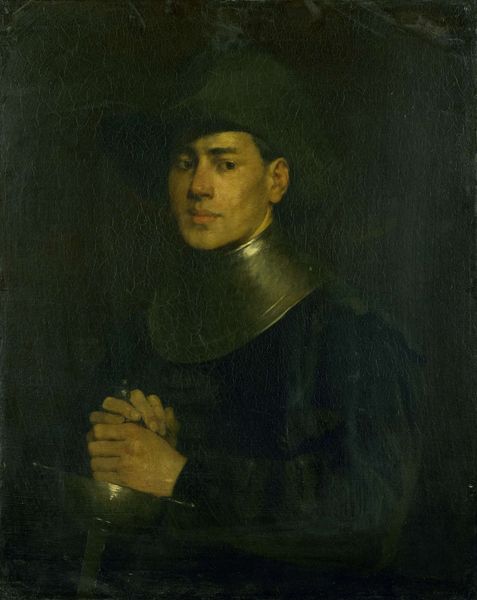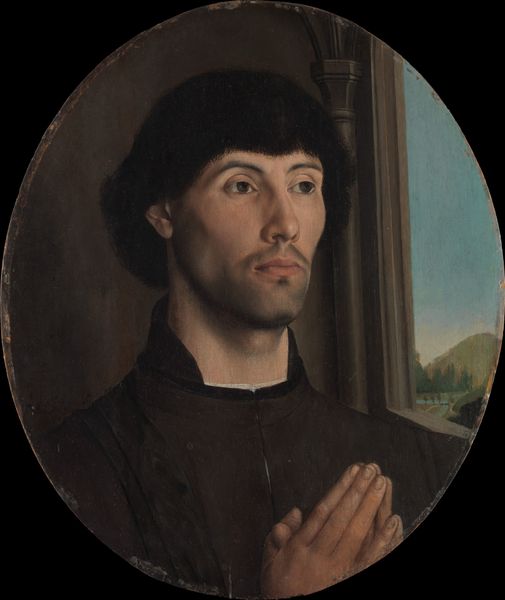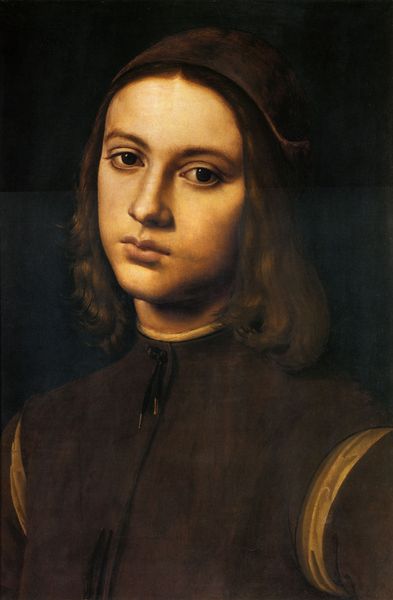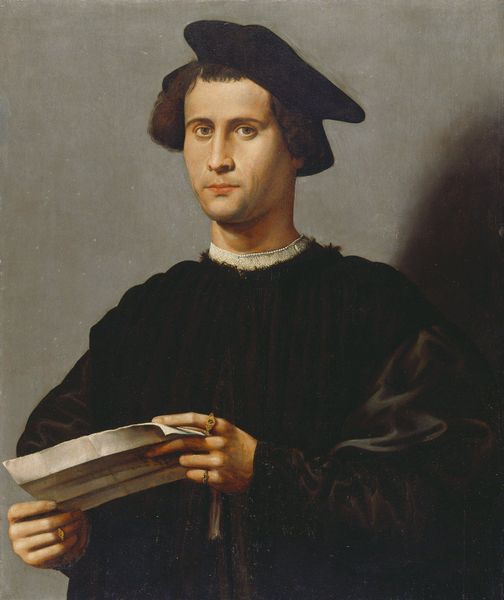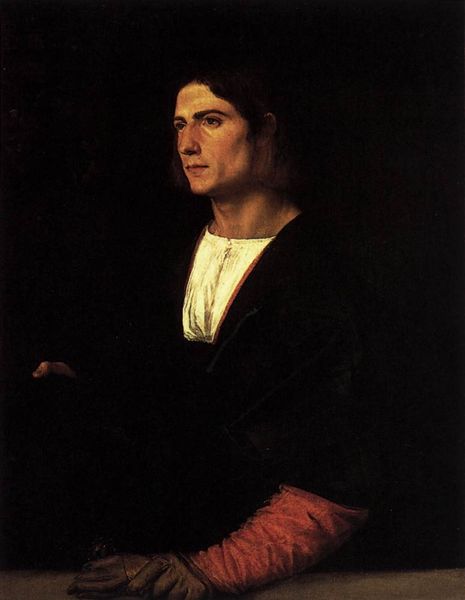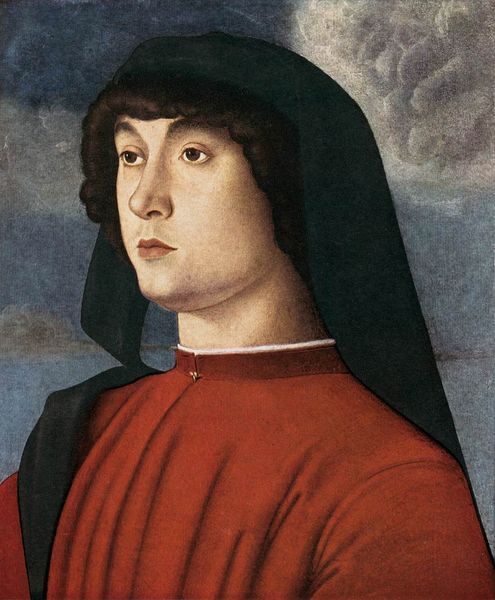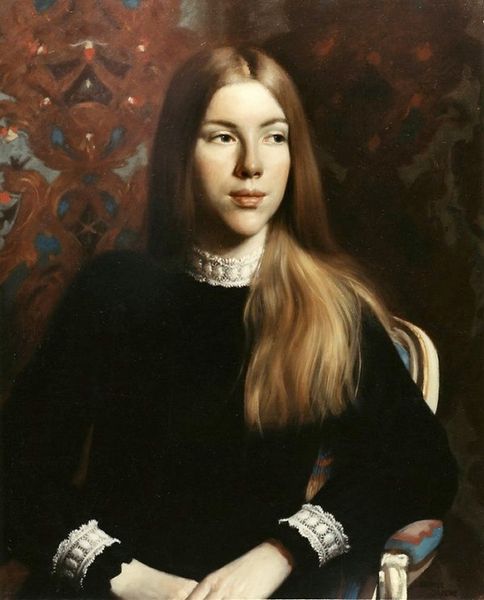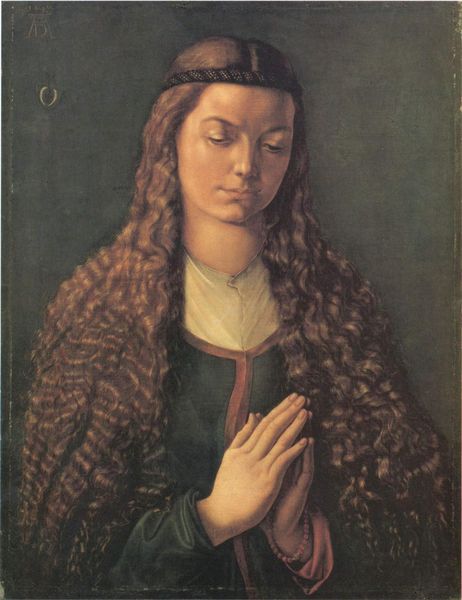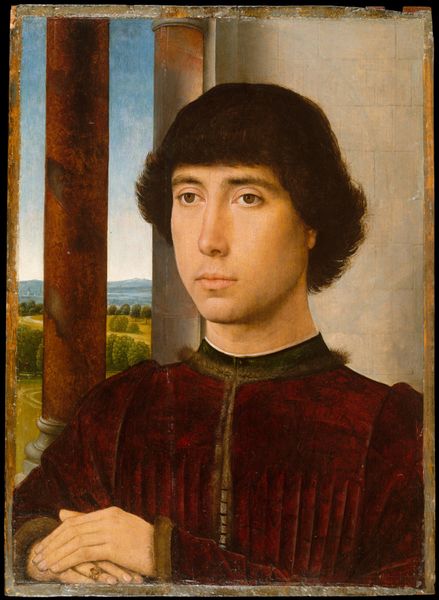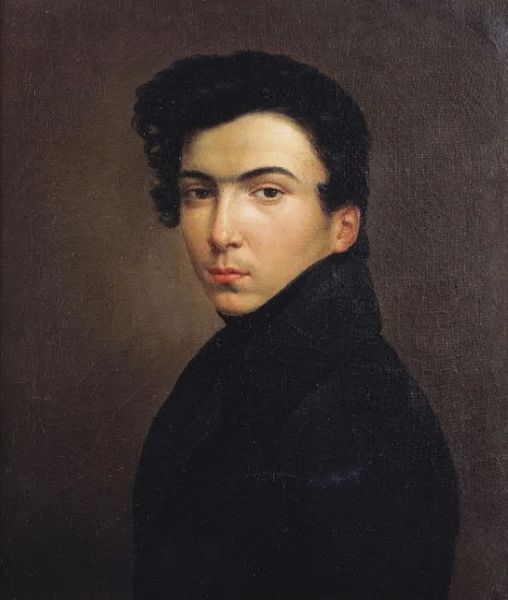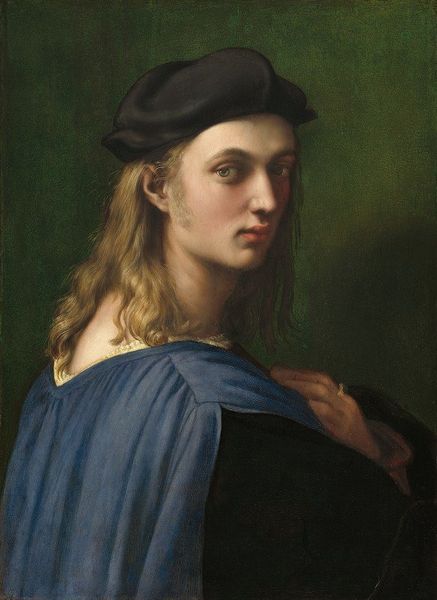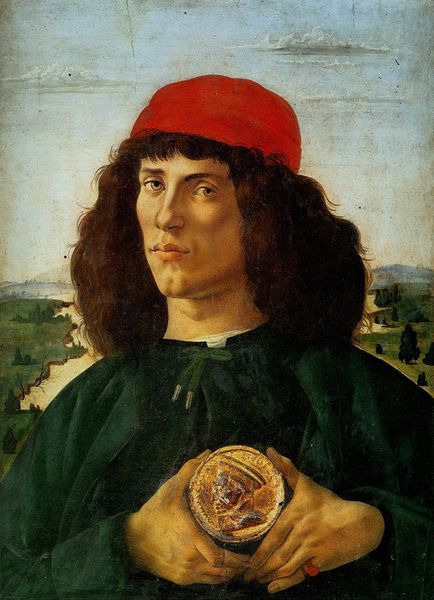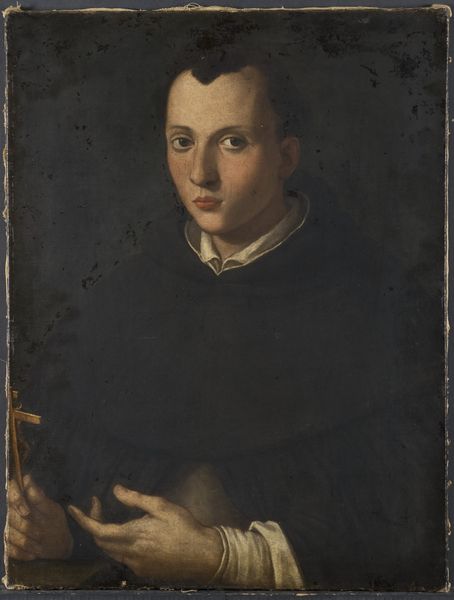
painting, oil-paint
#
portrait
#
portrait
#
painting
#
oil-paint
#
figuration
#
11_renaissance
#
italian-renaissance
#
realism
Dimensions: 73 x 54 cm
Copyright: Public domain
Curator: Allow me to introduce "Portrait of a Youth (Antonio Broccardo)," an oil painting completed around 1500 by the Venetian artist Giorgione. Editor: There's such a captivating melancholy radiating from the sitter, almost a sense of weary resignation in his downward gaze. Curator: Absolutely. Placing this work in its historical context is crucial; consider Venice at the cusp of the 16th century—a major power experiencing shifts in political and social dynamics, affecting artistic representation and the subjects of these portraits. Editor: Indeed. And visually, his hand pressed against his chest evokes centuries of symbolic language. Think of devotional imagery: that gesture traditionally signals piety, fidelity, and sincerity, though its use here feels… complicated. There's ambiguity. Curator: Right. The almost severe simplicity of his dark garments contrasted with those decorative golden embroideries speaks to class and status in that period. Consider too, the subtle challenges to fixed gender roles Giorgione seems to pose with this softer representation of masculinity, setting the stage for explorations of similar subjects and themes across following decades. Editor: And below the sitter, on what appears to be a ledge or balustrade, we observe miniature objects. I am struck by that small, possibly enameled portrait medallion, itself within the portrait—an echo, an invocation, of identity within identity. The placement of these objects—a small box, the medallion—creates this subtle narrative beyond the sitter's expression. Almost like clues… Curator: Definitely. Considering the social implications of portraiture in the Italian Renaissance, objects and sartorial choices communicate specific roles, privileges, and the subject's relationship with the society around them. So the arrangement feels calculated and charged with information for the original Renaissance viewers. Editor: Yes, although removed from its original context, the artwork retains an undeniable power, doesn't it? The artist, through those careful choices, lets us glimpse into the internal world of the subject...a fleeting but suggestive snapshot of Renaissance anxieties and aspirations. Curator: Yes, by considering both symbolic language and social realities we start to get a clearer and definitely richer appreciation for the work’s depth. Editor: Absolutely; it prompts us to look beyond mere surface and consider the confluence of symbol, psychology, and societal forces shaping Giorgione's subject.
Comments
No comments
Be the first to comment and join the conversation on the ultimate creative platform.
